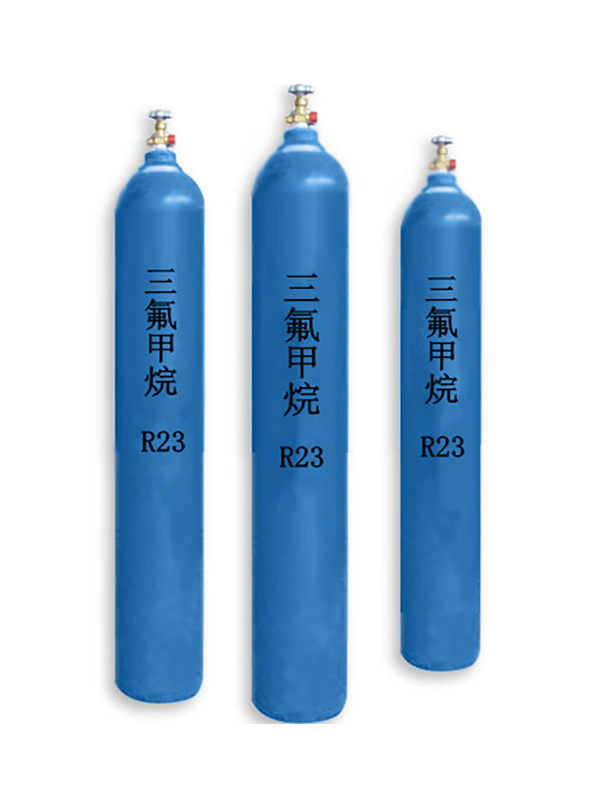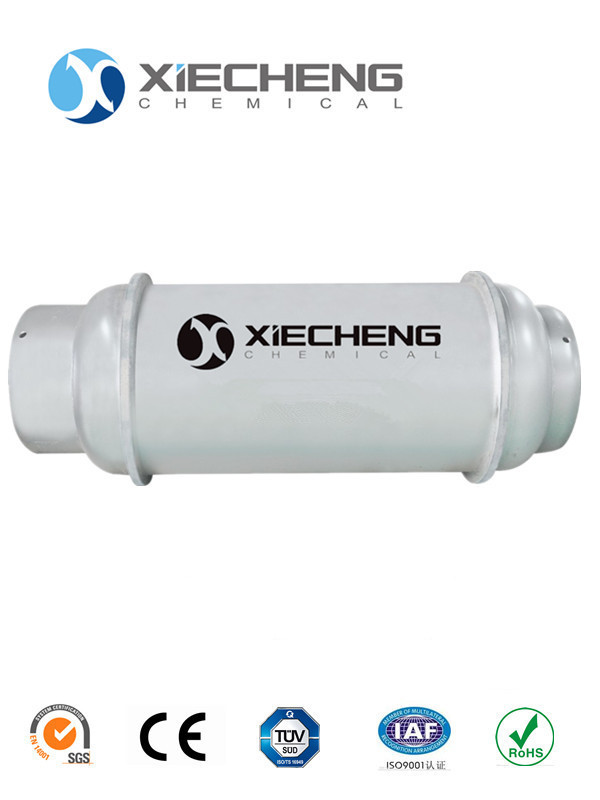
Reusable cylinders—400 liters, 800 liters, 1000 liters ISO-TANK
Physical Properties
| Molecular Formula | CH3CCLF2 | ||
| Molecular Weight | 100.49 | ||
| Boiling Point (°C) | -9 | ||
| Freezing Point (°C) | -131 | ||
| Liquid Density 30°C (kg/m3) | 1096.9 | ||
| Critical Temperature (°C) | 137.1 | ||
| Critical Pressure (MPa) | 4.12 | ||
| Ozone Depletion Potential (ODP) | 0.04 | ||
| Global Warming Potential (GWP) | 2400 | ||
| ASHRAE Safety Group | A2 (Non-toxic, Flammable) | ||
Quality Standards
| Purity | ≥99.8% | ||
| Moisture | ≤0.001% | ||
| Acidity | - | ||
| Residue on Evaporation | ≤0.01% | ||
| Chloride (Cl-) Test | - | ||
| Appearance | Colorless, clear | ||
| Odor | Odorless | ||
Applications
R-42b is a commonly used high-temperature refrigerant (R142b), mainly used in refrigeration and air conditioning systems (high-temperature air conditioning) in high-temperature environments, heat pumps, important components of various mixed refrigerants, and intermediates for polymer (plastic) foaming, thermostatic control switches, and aerospace propellants. It is also used as a chemical raw material. HCFC-142b is mainly used in refrigeration systems in high-temperature environments, thermostatic control switches, and intermediates for aerospace propellants, and also as a chemical raw material.
Storage and Transportation
R-124 refrigerant cylinders are pressurized containers. During storage, they should be kept away from fire and heat sources, and avoid direct sunlight. They are usually stored in a cool, dry, and well-ventilated warehouse. During handling, they should be handled gently to prevent damage to the cylinders and valves.
Refrigerant Oil
Refrigerant oils commonly used with R-142b refrigerant include: Suniso 4GS, 5GS, Capella WF68, LUNARIA KA56, etc. The type of refrigerant oil used in different equipment and applications should follow the recommendations of the refrigerant compressor and refrigeration (air conditioning) equipment manufacturers, or be determined based on the specific situation of the refrigerant compressor and refrigeration equipment used, i.e., selecting equivalent refrigerant oil that meets the design and technical requirements.
Packaging Specifications:
Reusable cylinders—400 liters, 800 liters, 1000 liters
ISO-TANK
Phase-out Schedule:
R-142b belongs to the HCFC category (second batch of restricted ODS substances, Class II Ozone-depleting Substances)—it damages the ozone layer and has a greenhouse effect. Therefore, its initial installation in new air conditioners and refrigeration equipment has been stopped in developed countries (EU, Japan, USA). Currently, China does not have any restrictions on the production, initial installation, or recharging of R142b refrigerant.
Protective Measures
Respiratory Protection: Generally, no special protection is required. In case of high-concentration contact, although generally no special protection is required, it is recommended to wear a self-priming filter-type gas mask (half mask) under special circumstances.
Eye Protection: Wear chemical safety goggles if necessary.
Body Protection: Wear anti-static work clothes.
Hand Protection: Wear general-purpose work gloves.
Other: Smoking is strictly prohibited in the work area. When entering tanks, confined spaces, or other high-concentration areas, supervision is required.
Emergency Response to Leaks
Quickly evacuate personnel from the contaminated area to the upwind side, isolate the area immediately, and strictly restrict access. Cut off the source of ignition. It is recommended that emergency response personnel wear self-contained positive pressure respirators and fire protective clothing. Cut off the leak source as much as possible. Ventilate appropriately to accelerate diffusion. Leaky containers must be properly handled, repaired, and inspected before reuse.
First Aid Measures
Skin Contact: Seek medical treatment for frostbite.
Inhalation: Quickly leave the scene to fresh air. Keep the airway open. If breathing is difficult, provide oxygen. If breathing stops, immediately perform artificial respiration. Seek medical attention.
Fire Fighting Methods
Cut off the gas source. If the gas source cannot be immediately cut off, do not extinguish the burning gas. Spray water to cool the container. If possible, move the container away from the fire site to an open area. Extinguishing agents: water spray, foam, dry powder, carbon dioxide
Keywords

142B
Contact Information
Product Categories
Inquire Now
If you are interested in our products, please leave your email address, and we will contact you as soon as possible, thank you!









